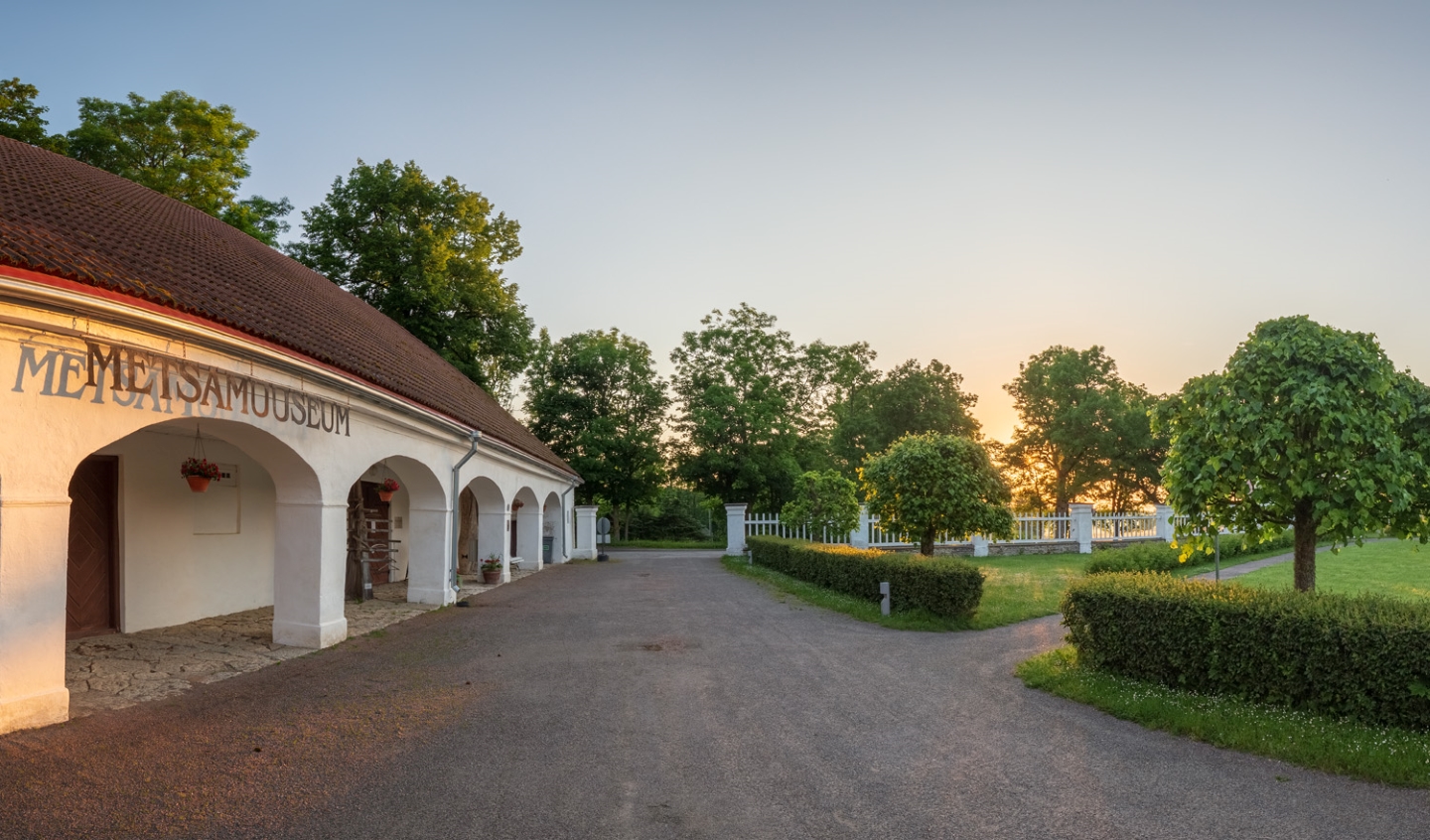Museum
The Sagadi Manor Museum consists of two parts: the thrilling Forest Museum in the former barn-carriage house and the historical Manor Museum in the manor’s main building, the manor house.
You can visit both buildings with one museum ticket.
Opening hours
We are open from Monday to Sunday
| During the summer season May until September | 10.00 – 18.00 |
| During the winter season October until April | 10.00 – 16.00 |
Ticket prices
| Single ticket | Adult EUR 5 Student EUR 3 Pensioner EUR 3 |
| Family ticket Valid for 2 adults and up to 2 children up to 17 years of age. | EUR 10 |
| Guide service | in Estonian EUR 80 /h in a foreign language EUR 90/h |
| Entrance fee outside working hours | EUR 25 |
Forest Museum
The ‘Forest Journey’ exhibition spans two floors, showcasing the importance and use of forests throughout our history. Experience the thrill of discovery, surprising moments, and hands-on solutions!
An immersive three-dimensional cinema hall
All of the walls of the video room on the ground floor are for displaying beautiful clips from movies. Overviews of the current state of Estonian forests and experience clips inspired by the beauty of the forest are shown.
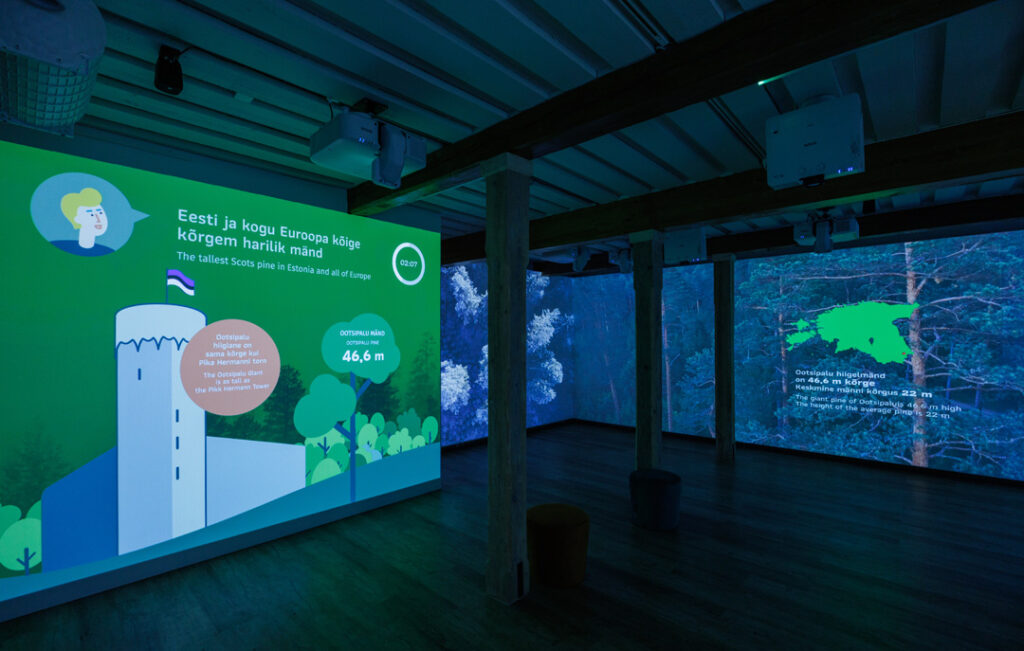
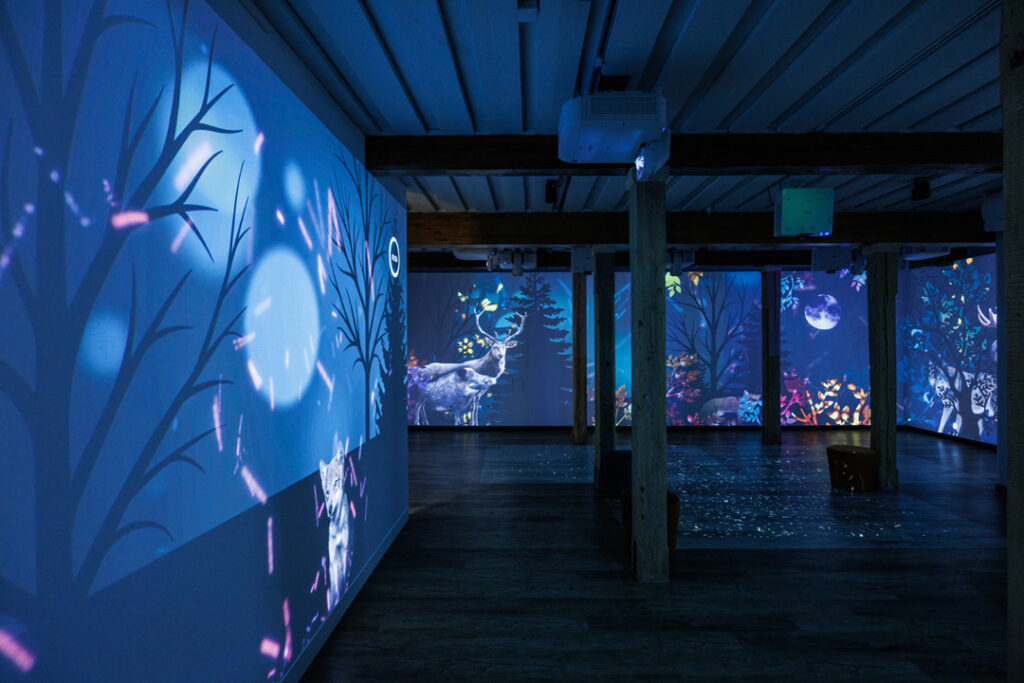
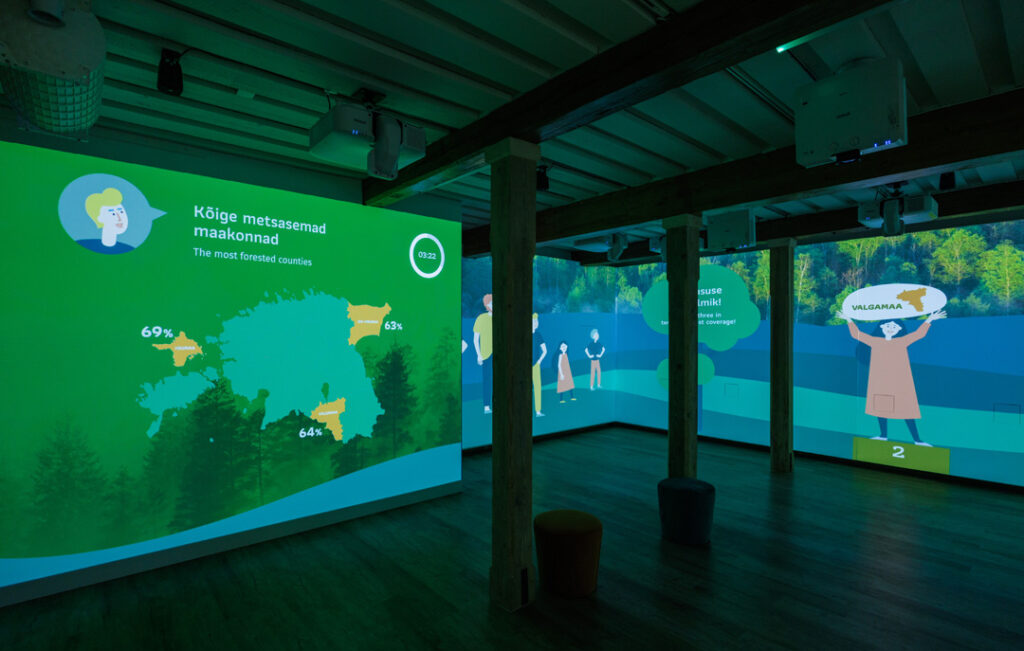
Life-size forest dwellers from tree crown to underground
What is a forest without animals? If you haven’t met them in the woods, then in this museum you can see what wild animals really look like. Under the ceiling, birds have found their place. In the middle of the room are stuffed examples of larger and smaller animals. In a separate room you can see who is living under the ground and what sounds are emanating from there.
A tour with virtual glasses through history with the help of Tõnis Niinemets!
Put your glasses on and you will see where and how our ancestors lived – since leaving the cave, man has built his home from wood. The guide is full of humour.
Race against a wild animal and learn to communicate with it
On one platform, you can see how fast you are and compare your speed with that of wild animals. Right next to it, Tõnis Niinemets teaches you how to communicate with animals. These are the favourite activities of children, without a doubt!
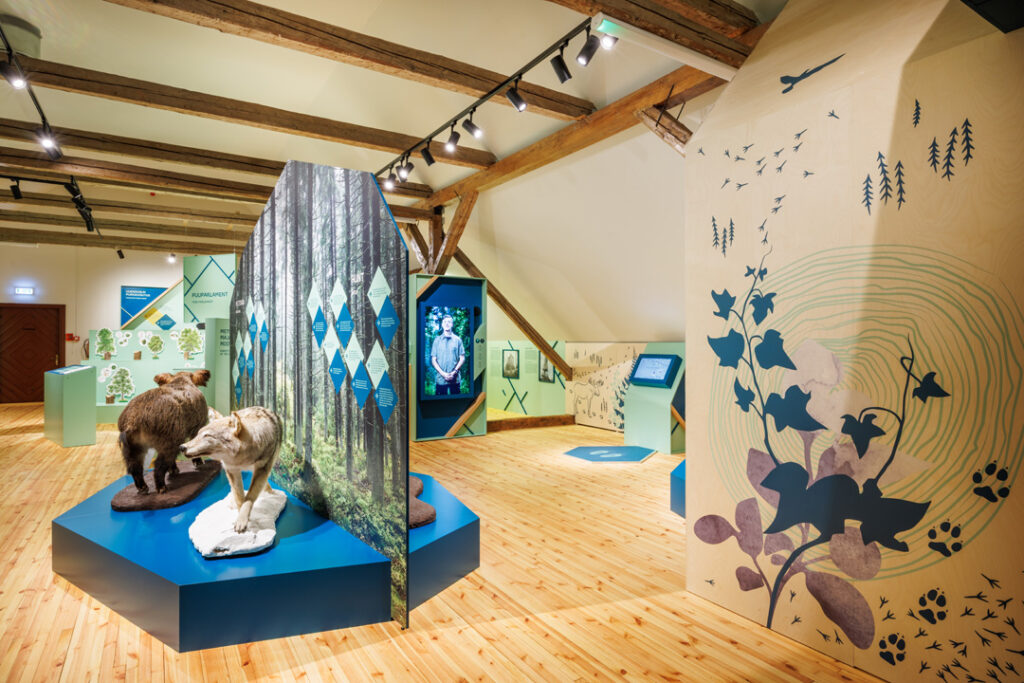
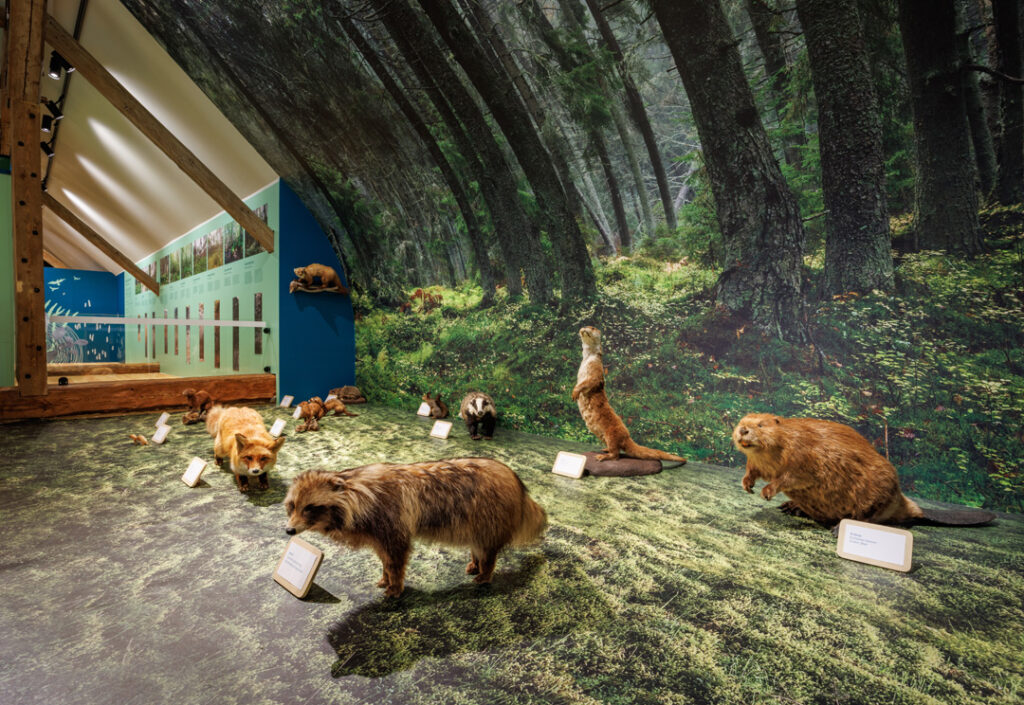
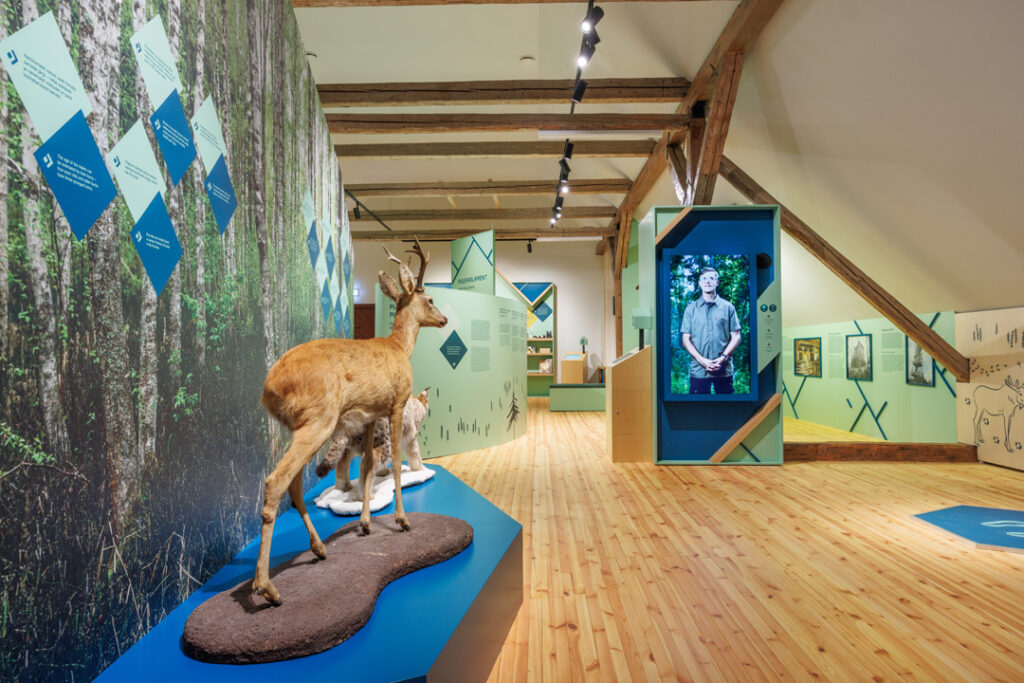
A small break on your journey through the forest – forest meditation
A forest meditation room has been built inside the small sauna house, where you can take a relaxed walk in your mind, along with a beautiful video and a soothing voice. This is true relaxation!
How does it feel to operate a harvester?
On the ground floor there is a harvester simulator, behind the levers of which you can feel like a real forester.
Unique souvenirs
Some go to Sagadi just to buy unique forest-related items from our souvenir shop. Come take a look!
In addition to the above, the exhibition includes a tree parliament, a video clip about Estonians as forest people, a forest cinema, information about the link between climate change and forests, an exhibition about the long history of forestry, and much more.
The permanent exhibition of the Forest Museum was completed in 2022. Its curators are Ain Kütt and Katre Ratassepp. The exhibition’s spatial solutions, design, and exhibits were designed by OÜ Pult. The exhibition was constructed by OÜ Riksen.
A worthy collection
Sagadi Museum’s collections contain nearly 25,000 archival objects, among which are many objects under heritage protection. The collections of both the Forest and Manor Museums are mostly of national importance, but there are also objects of international importance.
The main fund of the Forest Museum is divided into four main collections:
- specialised forest museum collection – nearly 9,000 records
- historical manor house collection – more than 500 items
- forestry archives – more than 10,000 records
- photo library – close to 8,000 photos
In addition, the museum has a large collection of museum auxiliary materials that can be used as background or additional material in the exhibition.
It is possible to borrow materials and publications from the library with a term of use of up to one (1) year.
Manor House
At the heart of the Sagadi manor complex is the manor house, the ornate facade of which is connected to the manor museum. The architecture and interior of the manor are exhibited in the building along with period furniture.
When it was completed in 1753, the manor house with its ornate Rococo-style exterior façade was unique in Estonian manor architecture. Just 40 years after its completion, the out-of-style castle was rebuilt according to new trends – the manor house acquired an early neoclassical exterior that has survived to this day. The ground plan for the manor house meets all the requirements of Baroque architecture, with the living rooms being positioned in an impressive enfilade: the wide double doors of these rooms are located on a single axis, and each room unfolds like a separate performance.
The manor house has been thoroughly renovated in the 1980s and from 2017–2023.
There’s a lot to see on the two floors of the mansion.
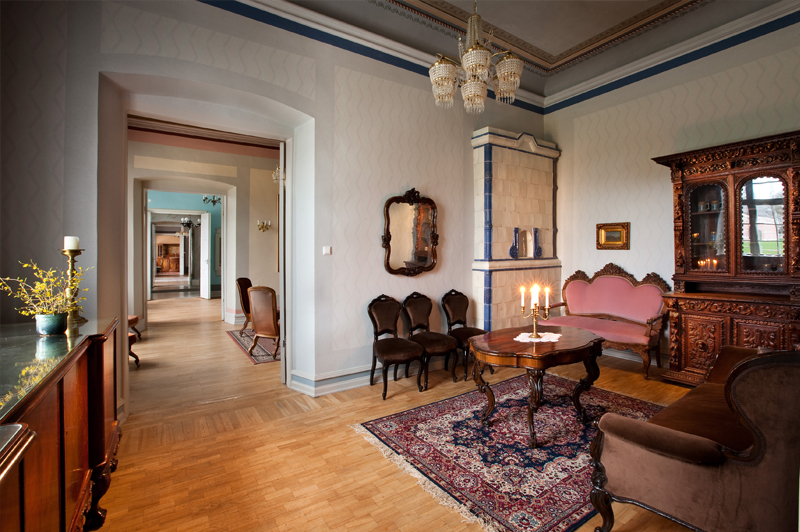
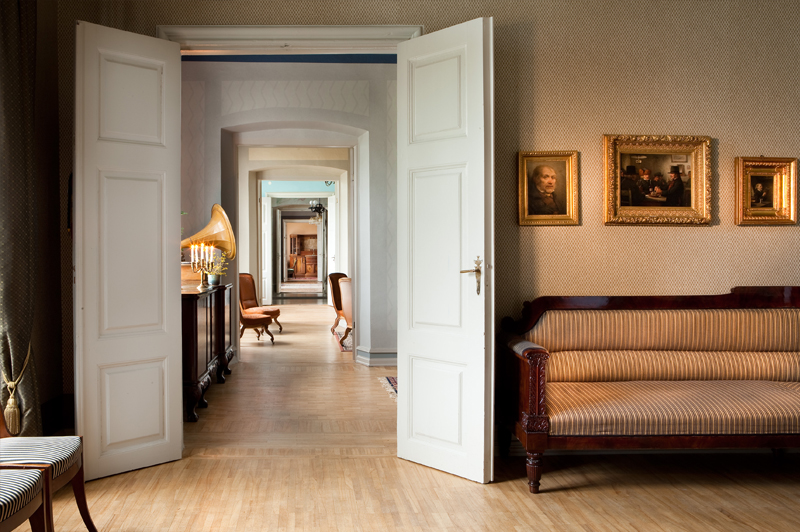
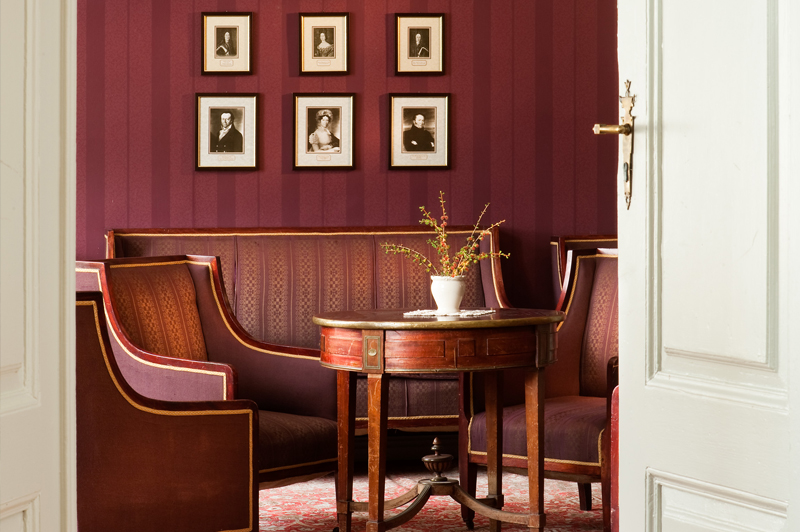
Furniture
The rooms of the manor house are mainly furnished with beautiful 19th-century manor-style furniture collected from all over Estonia. Many of the items are originally from Toompea Castle. The furniture on display is mainly representative of the Biedermeier and neo-Rococo styles, although there are also various objects in the Empire and Historicism styles.
Original pieces
Only the children’s room has been furnished with objects that were originally from Sagadi Manor, namely the sofa set from the main hall, which dates back to the 1910s. Items probably acquired by Paul Aleksander Eduard von Fock on his travels to Japan and China, such as a tea service, a set of small decorative jasper objects and samurai suit in all its glory give us an idea of the lust for adventure of the barons who lived here.
Located next to Baron’s bedroom, the bathroom features an original bathtub with a bath stove that dates back to the early 20th century.
Art
Two Dutch-style paintings by Johann Friedrich Seupel hang on the side walls of the main hall: The Cat and Dog Quarrelling (1786) and Fowl in the Manor House Park (1780s). The guest rooms feature 19th-century landscapes painted by Oscar Hoffmann and artworks depicting Estonian peasants. The ceilings of eight of the manor house’s rooms are decorated with 19th-century ceiling paintings, the most prominent of which are in the main hall, the blue salon, and the grotto.
Trophy room
The trophy room is located in the former manor kitchen, where, in addition to impressive hunting trophies, Sven Lord’s unique collection of hunting weapons, reflecting their development over the last 250 years, is displayed. The exhibition is complemented by the set of furniture made from fallow deer antlers in Germany in 1870.
Attic
The attic floor contains unrestored furniture, mainly from the beginning of the 20th century, including items produced at A. M. Luther’s factory and A. Umberg’s workshop. The seminar room, fitted with original furniture from the Riigikogu (Estonian Parliament), is a specific point of interest.
Unique features
A giant mirror is found in the servants’ hallway – one of the largest mirrors on display today in any of Estonia’s manor houses. There are also two majestic chimney mantles which rise through two floors.
Seven ceiling paintings can be admired in the manor house of Sagadi Manor, most of which were restored and re-coloured between 2019 and 2021.
In the western wing of the manor house, two 18th-century toilets have survived.
In the room under the mantle chimney, or grotto, you can see a unique stove with paintings, which also dates back to the 18th century.
